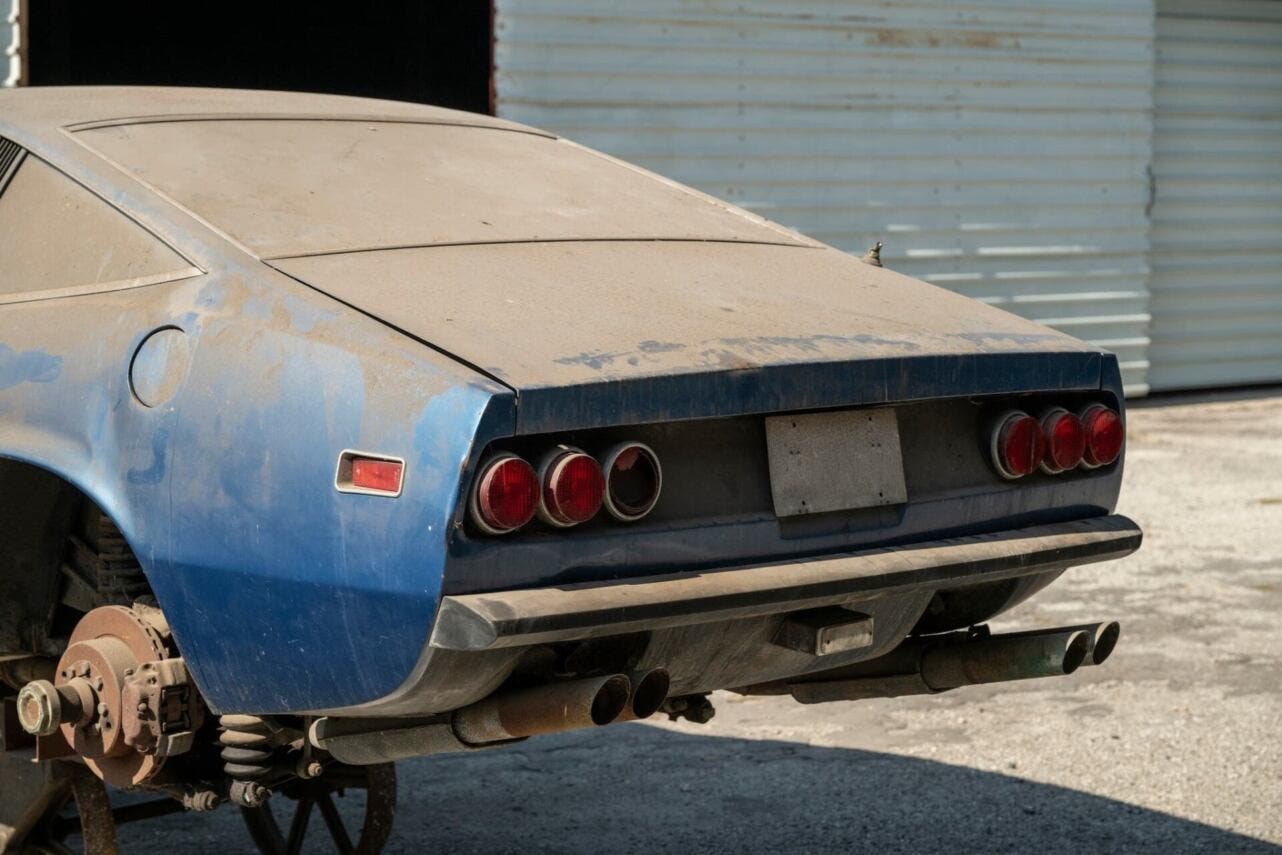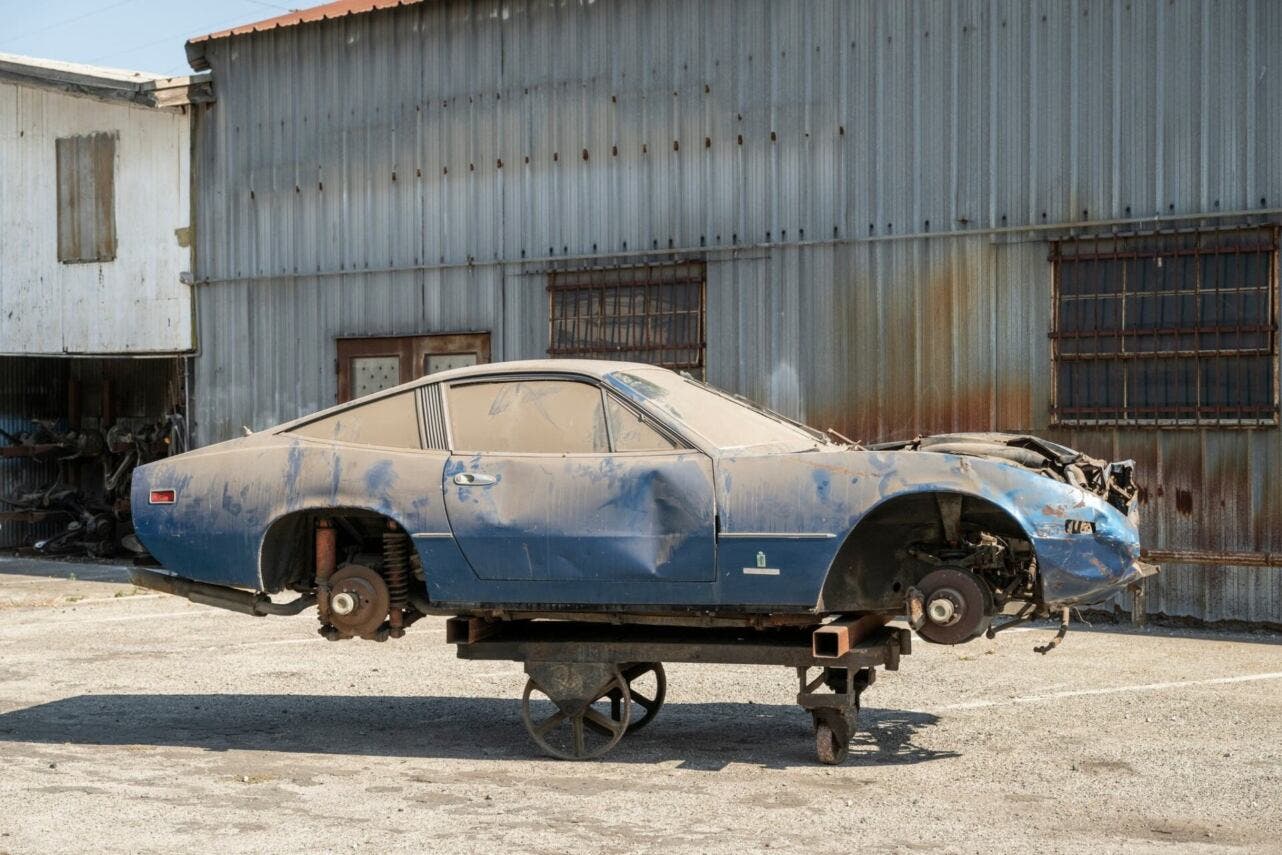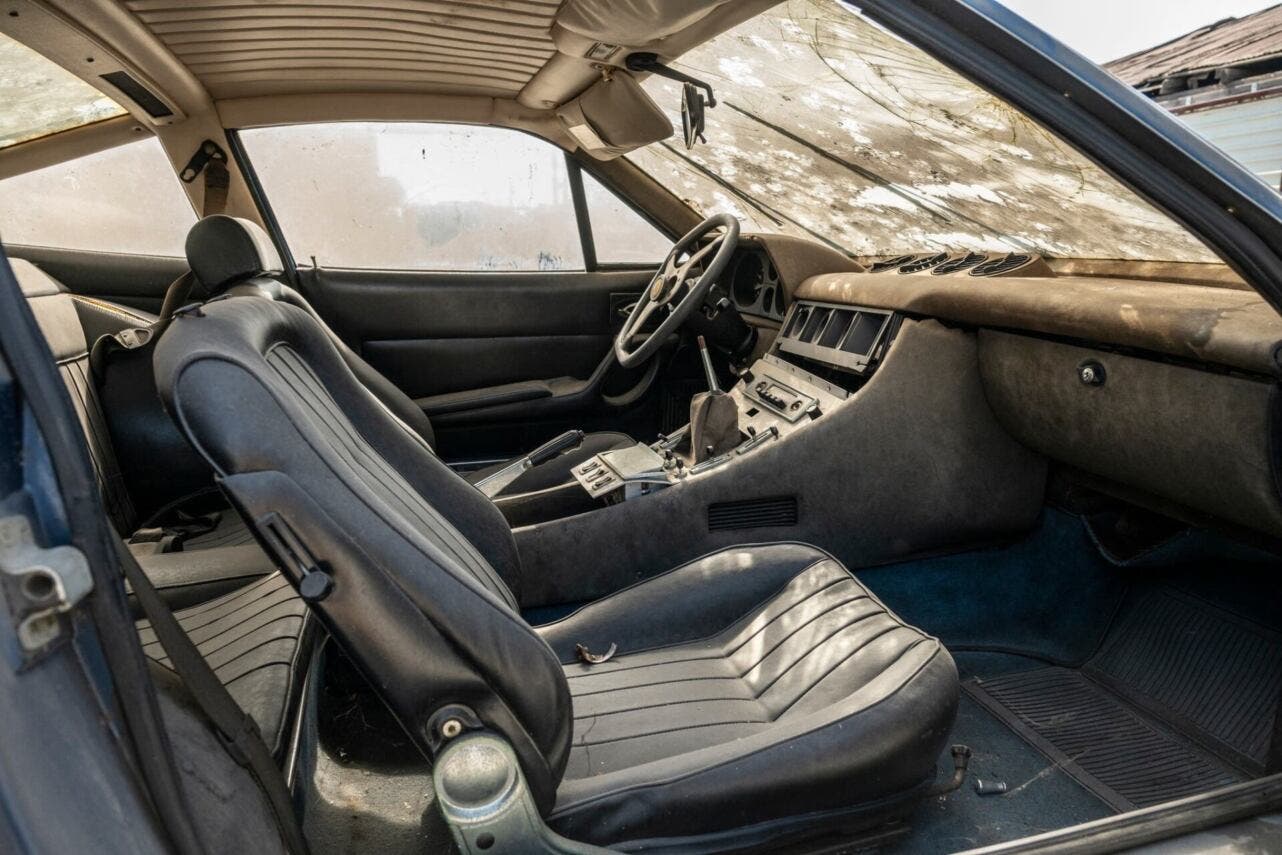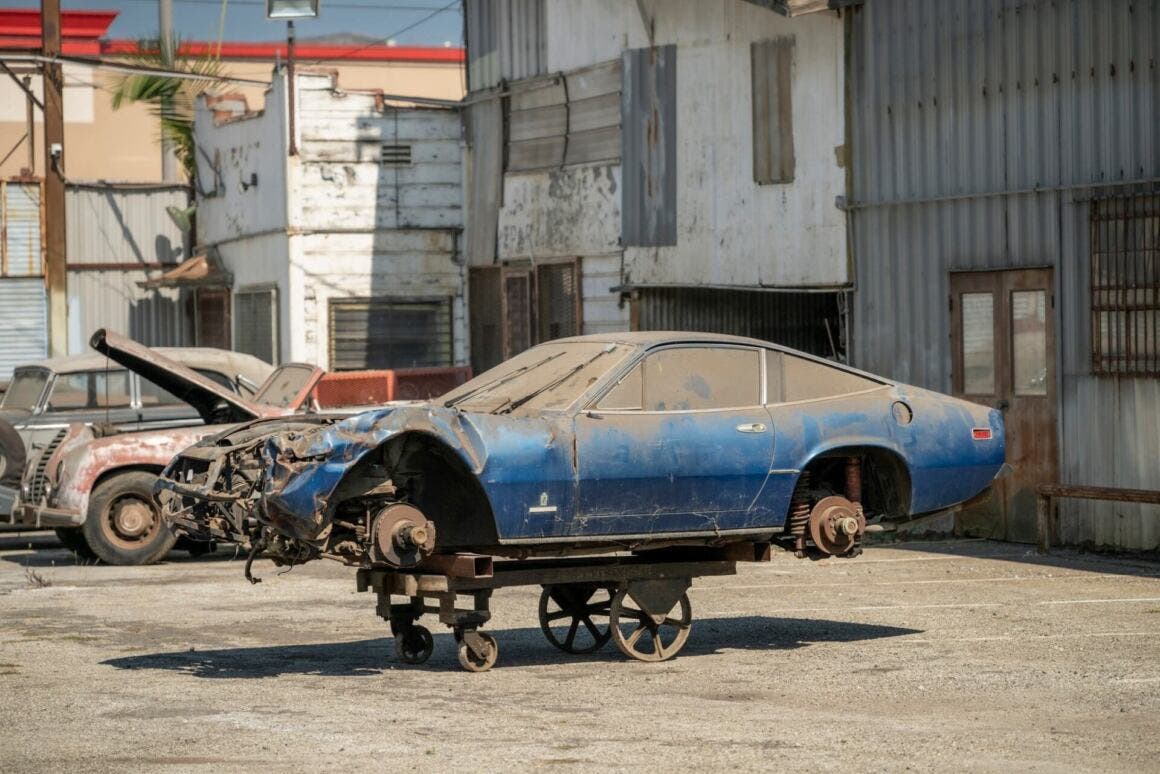A 1972 Ferrari 365 GTC4 will be auctioned by RM Sotheby‘s at their Los Angeles, California sale scheduled for October 26. Pre-sale estimates do not exceed $50,000. This might seem like a bargain price, if it weren’t for the fact that the car destined to find a new owner is in pitiful condition.
Ferrari 365 GTC4: a damaged and abandoned example up for auction

For nearly five decades, it has remained in a private collection, hidden from view, after being purchased following an accident. The marks of this crash are perfectly preserved, on a canvas further marked by the passage of time. The accident occurred in 1977. Since then, this specimen has been waiting to be restored to its original condition.
Originally, this Ferrari 365 GTC4 was imported into the United States through Modern Classic Motors. Finished in Blu Ribot with Nego Cogolo leather interior, its first owner was Hollywood producer James R. Burroughs. Now, after a long absence in storage, it emerges from the shadows, offering itself to the temptation of those who might want to undertake the restoration project. The purchase could turn out to be advantageous, given that there’s no reserve price, but in auctions, one can never predict where the bidding will end up.

Identified by chassis number 15633, the car catalogued by RM Sotheby’s belongs to a family of 508 examples. Specifically, it’s the 423rd in the series. It features electric windows and air conditioning. The Ferrari 365 GTC4 succeeded the 365 GT 2+2. It’s a coupe, but unlike other creations from Maranello, it’s not a two-seater. Here, there are two small rear seats, suitable for accommodating two children.

Debuted at the Geneva Motor Show in 1971, it didn’t capture people’s hearts like the 365 GTB/4 Daytona, which inspired it. However, it was beautiful and streamlined. After all, it bore the stylistic signature of Pininfarina, who has rarely missed the mark. The tubular steel chassis housed a 4.4-liter V12 engine, producing 340 horsepower. On the version destined for the U.S. market, where emissions regulations were less permissive, this figure dropped to 320 horsepower, but the energy deficit was hardly noticeable.
